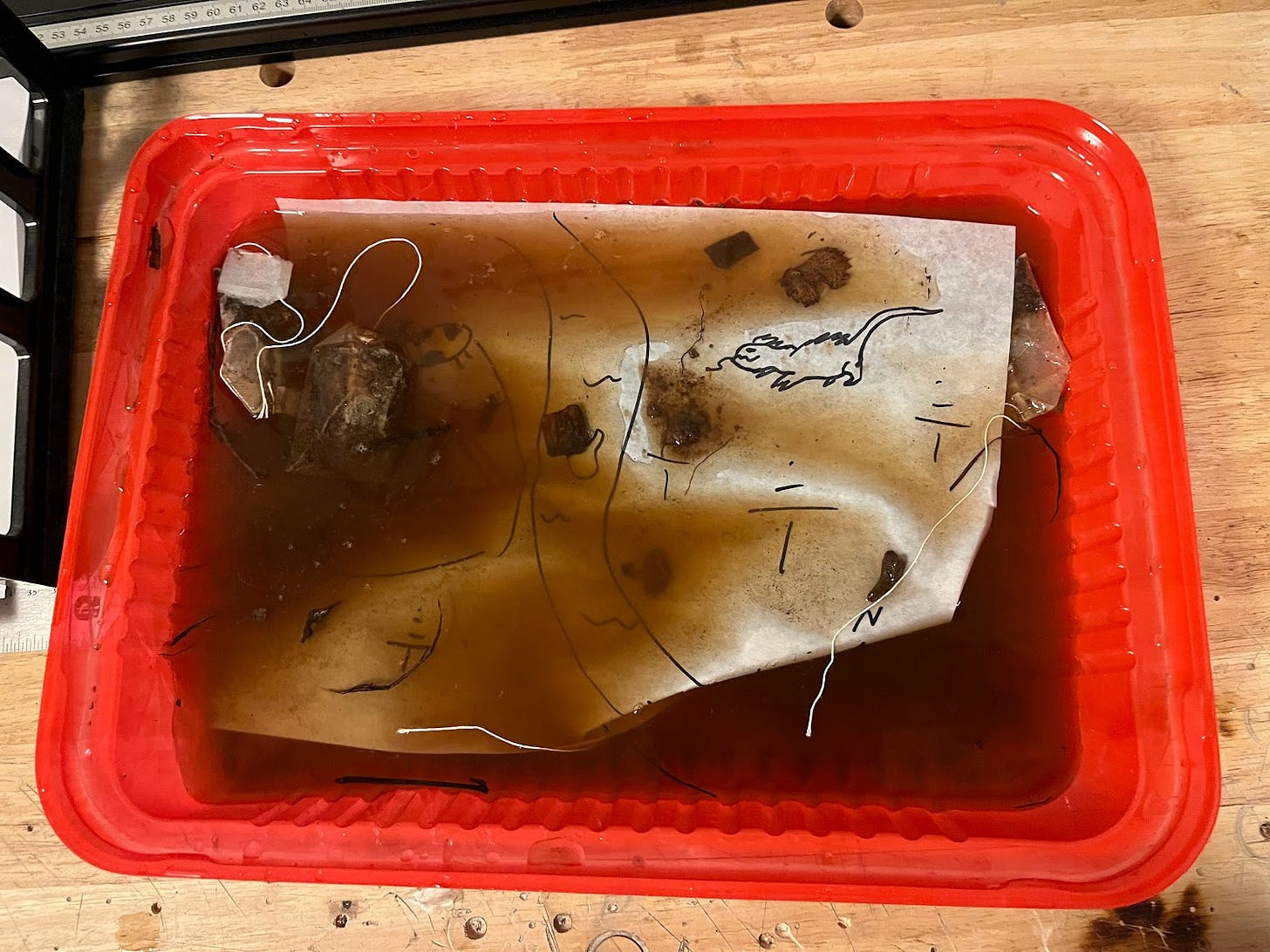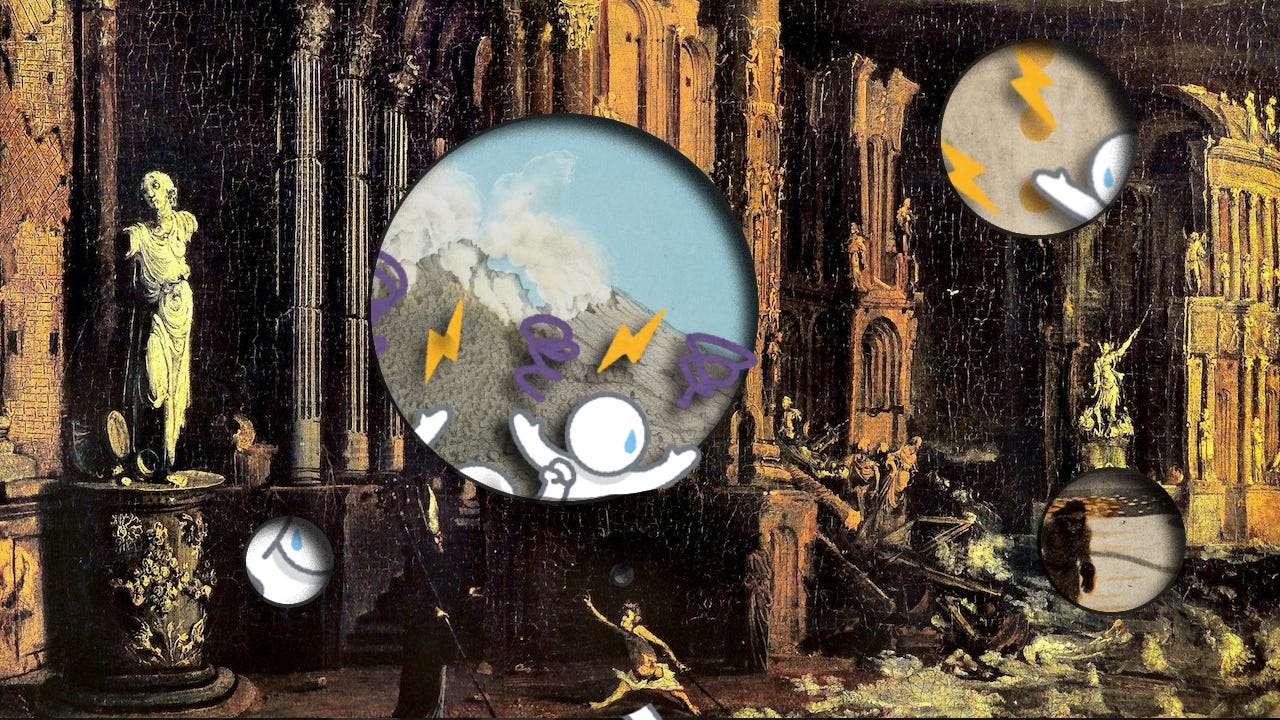Whether I was guiding middle schoolers or seasoned Adventurers League players, the dynamics were the same - experience level with the game didn’t matter. If players had rolled a thousand dice or never touched a set, the challenge was to captivate them all equally. After a decade of Game Mastering (GM) and five years of teaching K-12, below are my tried and true tools for setting up your groups first TTRPG session.
Starting In Medias Res & Being Dramatic
In every game I run, I launch the story in medias res, plunging players straight into the action. After painting a quick picture of the world - just enough to set the scene - I dive right into a combat sequence already in progress.
There’s no need to worry yet about how their characters met, or even fully explain the game mechanics beyond basic dice reading. The goal is immersion. I simply ask, “What do you do?”
We start high above an autumn forest, where cliffs and rivers carve the landscape west of Amber City. As the camera pans down, an arrow suddenly shoots out from the tree line. We zoom in to see two horses pulling a cart as it weaves through the trees, pursued by another cart close behind. Arrows whistle through the air, one grazing past [Specific Player’s Name]’s head. Who is driving?
From there, I place each character right in the thick of it. One player takes the reins, weaving the cart through the forest, narrowly dodging obstacles and ancient ruins. Another braces at the back, under heavy fire, trying to fend off the relentless pursuit. And just for fun, the wizard is clinging desperately to the underside of the cart, struggling to hold on as chaos erupts around them.
As I describe this scene, I don’t just narrate - I embody it. I leap around the room, dive to the floor, and dodge imaginary arrows. The energy the host brings sets the tone for the entire room. By modeling that intensity, I encourage my players to match it, pulling them deeper into the adventure.
Asking Questions
Empower your players by giving them autonomy; invite them to help build the world alongside you. In my classroom, I always start by asking students questions about themselves, exploring their curiosities and then connecting those to the subject matter. In a TTRPG, you have even more opportunities to do this. By asking questions about their characters, you can weave their answers into the fabric of your world.
Take the in medias res example I mentioned earlier: I always ask my adventuring party, "What did you steal?" That single question not only sets the scene but also creates a cohesive motive, fuels their creativity, and provides immediate stakes. The answer defines why they’re running, driving the action forward with purpose.
One time, I ran a game in Ecuador with twelve players, exactly as hectic as it sounds. Their answer to the question was "a dead body," which spun off into a vampire plot that spanned my entire visit. In contrast, a session with a group of teachers from Jersey led to an entirely different adventure when they answered "a goblin crown"-with all the chaos that crown entailed.
This process isn’t just for the start of the game, either. Periodically, and without derailing the flow or turning every moment into backstory hour, I ask them questions about their characters. When someone narrowly misses knifing a giant badger, I’ll ask, “Where did you get that knife, anyway?” If the rogue scales the Centipedal Monument with expert climbing skills, I’ll inquire, “Who taught you to climb like that?”

In some sessions, I use prompts from The Quiet Year to involve players in worldbuilding by shaping the history of the game world. Instead of their answers instantly materializing in the current scene, their contributions are integrated into the world’s historical backdrop. This approach allows their ideas to influence past events, which in turn enriches the setting and offers opportunities to weave their responses into the ongoing narrative, adding layers of depth and continuity to the game world. An air of mystery exists when you wonder, what did happen to that king?
Trust your players to help tell the story. Their input not only enriches the narrative but also deepens their investment in the world you’re creating together.
Involving the Dead
Don’t let players languish in limbo while waiting for revival; keep the dead involved in the action. I’ve found that some of the most memorable moments in an Adventure League session come from pushing the stakes even higher (and I have a low opinion of the default content in Adventures League). One time, a giant honey badger not only knocked a player out but also began dragging their body towards a ravine. When the individual managed a natural 20 to revive themselves just at the edge of the precipice, the moment was all the more thrilling, and it added palpable tension for the rest of the players fighting to keep them surface-level.
Similarly, when players are making death saving throws, don’t just let it be a mechanical roll. Dive deeper by asking them questions: “What childhood memory are you clinging to as you fade?” or “What mark will this encounter leave on you forever?” These questions not only enrich the narrative but also amplify the emotional weight of the moment, making each victory or failure feel more impactful.
Mistakes as Opportunities
Students and role-players will make mistakes, but lets turn these into learning opportunities.
Every improv group knows the golden rule: “Yes, and…” When someone adds something to the story, you build on it rather than dismiss it. You respond with, “Yes, and then this happens.” But there's also value in the less common rule, “No, but…”, where you acknowledge that some ideas might not fit perfectly but offer a similar, plausible outcome instead.
This principle is especially useful when players roll poorly. Instead of letting a missed shot or failed action be a letdown, find a way to make it matter. If an arrow misses its target, don’t let it vanish into the void. Maybe it reflects off an unseen light source or creates an unexpected opportunity, like providing a foothold for the rogue to climb upwards. Every dice roll should have an impact, whether it's a minor twist or a new angle on the situation, ensuring that even less successful attempts drive the story forward.
Additionally, I recommend this video from Matt Stone and Trey Parker at NYU's MTVU 'Stand In', where they discuss the importance of using 'therefore' and 'but' in storyboarding, instead of relying on 'and then this happens.'
Different Play Styles
Even with a well-planned session zero where players discuss expectations, it’s inevitable that each player will approach the game with different goals and playstyles. Embrace this diversity by giving everyone a chance to shine. For instance, while running a D&D club for neurodiverse students, I had to navigate a wide range of communication styles - some students were selectively mute, while others were exceptionally talkative.
For the more vocal players, I made space for their dramatic speeches but also learned to rein them in when needed. If I needed to cut someone off, I did so with clarity and respect: “I’m going to pause here for a moment. I definitely want to come back to this, [student], but I also want to ensure everyone has a chance to jump into the scene. I’m especially interested how your choices will impact [plot point plot point plot point].” By explaining my reasoning confidently and maintaining a positive tone, I made it clear that I valued both the individual’s input and the group’s dynamics, while also demonstrating that their ideas would be addressed in due course.
For less vocal players, who might not always have much to contribute, it’s important to create opportunities for them to engage if they choose. Provide space and encouragement for their input by asking thoughtful questions and offering options for participation. They might simply be enjoying the social aspect of the table without dialogue being necessary, have a partially-formed idea they haven’t shared yet, or have struggled to get a word in during a bustling session.
One student in my group had a blast but still preferred to engage by receiving options and providing one-word responses to choose their actions. By offering clear choices and allowing them to respond succinctly, I ensured they could fully participate and have fun in a way that suited their communication style.
If you’re unsure how to best support these players, follow up after the session to check in with them. Ask how they’re feeling about the game and what would make their experience more enjoyable. Give opportunities for players to share how they’re enjoying the game, and how they wish to enjoy it.
Outcomes and Goals
For each player, maintain a list of potential outcomes related to their characters. Are you aiming to help them achieve the climax of their backstory, or is it time for them to acquire new loot? While you may not have everything planned out for every session, having a checklist allows you to seize the right moments and meet these goals. Use your question-asking skills to gather information that helps shape these outcomes and deepen their character motivations.
This approach extends beyond just players - it’s also crucial for environmental design. Consider how iconic scenes from Indiana Jones, Pirates of the Caribbean, or Alien: Romulus effectively use their surroundings in action sequences. Let ledges crumble, towers collapse, fires spread, and spells influence the very clouds above them.
To enhance your campaign, especially when player choices are unpredictable, create a list of key scene features (e.g., carts, boulders, rivers, giant beetles). Then, outline several potential uses for each element. For instance, a rug could conceal a trapdoor, be pulled out from under an enemy, or serve as a makeshift hang glider. By preparing these possibilities, you’ll be better equipped to improvise dynamic and cinematic scenes with your party.
For more on environmental design through landmarks and familiarity, check out my article here:
Blooms Taxonomy
When discussing outcomes and goals, Bloom's Taxonomy offers a valuable educational framework for setting incremental objectives. While it might be challenging to apply directly in improvisational settings, it provides a structured approach to ensuring that new players are both learning and enjoying the game.
Bloom's Taxonomy breaks down learning into several levels, from basic knowledge and comprehension to more complex analysis and evaluation. By applying these principles, you can create a progression of goals that help players gradually build their skills and confidence. For example, you might start with simpler tasks and gradually introduce more complex challenges as players become more comfortable with the game mechanics.
For a more in-depth exploration of how Bloom's Taxonomy can be used to support new players in RPGs, I recommend this article by Mephit James: New Players in RPGs and Bloom's Taxonomy. James provides a detailed analysis that can offer further insights and practical applications for incorporating this educational framework into your game sessions. Next week we’ll look at applying science and educational topics into a tabletop game.
In Summary
Throw them into the gauntlet - before they start asking what they can do, they’ll just try an do it. It doesn’t have to be overwhelming, but something where options easily present themselves.
Ask questions! Get your players involved in adding to their world, making them active participants.
Don’t forget to keep engaging everyone, even when their character is down. Be mindful and inclusive of their playstyle.
Behind the GM screen have goals for both their characters and for objects in the terrain. Not everything needs to be planned from the get go, but these strategies can help you improvise just the right thematics at just the right moment.







